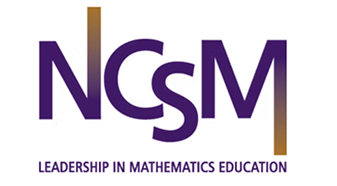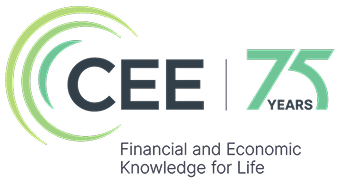Measures of center
Analyze large datasets by measuring their central tendency while considering the context and distribution of the data.
K–2 Competencies
Recognize that categorical data does not have a measure of center.
Describe the center of numeric data categorically using phrases like “most popular”.
Classroom resources
Data Science Starter Kit Module 3: Making Sense of Data - Analysis and Modeling
Welcome to the exciting part of data science—making sense of the information you’ve collected! This module focuses on how to analyze data to find patterns, understand what the numbers really mean, and start drawing conclusions.🔗
Analysis and Modeling isn’t about complex mathematics or advanced statistics. It’s about developing the thinking skills to look at data and ask, “What story is this telling me? What patterns do I notice? What questions does this raise?” Whether students are working with simple tally marks or sophisticated datasets, the fundamental thinking is the same.
3–5 Competencies
Calculate summaries for categorical and numeric data, focusing on total and typical values.
Classroom resources
Data Science Starter Kit Module 3: Making Sense of Data - Analysis and Modeling
Welcome to the exciting part of data science—making sense of the information you’ve collected! This module focuses on how to analyze data to find patterns, understand what the numbers really mean, and start drawing conclusions.🔗
Analysis and Modeling isn’t about complex mathematics or advanced statistics. It’s about developing the thinking skills to look at data and ask, “What story is this telling me? What patterns do I notice? What questions does this raise?” Whether students are working with simple tally marks or sophisticated datasets, the fundamental thinking is the same.
6–8 Competencies
Identify measures of center as statistical values that represent the central tendency of data sets.
Explain what measures of center are useful for and their limitations.
Classroom resources
Data Science Starter Kit Module 3: Making Sense of Data - Analysis and Modeling
Welcome to the exciting part of data science—making sense of the information you’ve collected! This module focuses on how to analyze data to find patterns, understand what the numbers really mean, and start drawing conclusions.🔗
Analysis and Modeling isn’t about complex mathematics or advanced statistics. It’s about developing the thinking skills to look at data and ask, “What story is this telling me? What patterns do I notice? What questions does this raise?” Whether students are working with simple tally marks or sophisticated datasets, the fundamental thinking is the same.
9–10 Competencies
Identify appropriate ways to summarize numerical or categorical data using frequency tables, graphical displays, and numerical summary statistics.
Classroom resources
Is Simone Biles the GOAT? by DataClassroom
The purpose of this lesson is to help students apply advanced statistical concepts including data standardization, correlation analysis, and comparative modeling to evaluate claims about athletic performance across different time periods. Students will learn to use z-scores and statistical inference to make fair comparisons when raw data cannot be directly compared due to changing conditions and scoring systems.
Data Science Starter Kit Module 3: Making Sense of Data - Analysis and Modeling
Welcome to the exciting part of data science—making sense of the information you’ve collected! This module focuses on how to analyze data to find patterns, understand what the numbers really mean, and start drawing conclusions.🔗
Analysis and Modeling isn’t about complex mathematics or advanced statistics. It’s about developing the thinking skills to look at data and ask, “What story is this telling me? What patterns do I notice? What questions does this raise?” Whether students are working with simple tally marks or sophisticated datasets, the fundamental thinking is the same.
11–12 Competencies
Explore the sensitivity of the mean to outliers compared to the median.
Discuss instances when to use the mean or median based on the context and data distribution (e.g., skewed vs. symmetric distribution).
Classroom resources
How Many Babies to Make the Average? by DataClassroom
The purpose of this lesson is to help students understand fundamental concepts of statistical sampling theory and the Central Limit Theorem through hands-on simulation of birth weight data. Students will explore how sample size affects the reliability of population parameter estimates, discover the theoretical foundations of statistical inference, and develop intuition about the practical considerations of sampling in real-world research.
Data Science Starter Kit Module 3: Making Sense of Data - Analysis and Modeling
Welcome to the exciting part of data science—making sense of the information you’ve collected! This module focuses on how to analyze data to find patterns, understand what the numbers really mean, and start drawing conclusions.🔗
Analysis and Modeling isn’t about complex mathematics or advanced statistics. It’s about developing the thinking skills to look at data and ask, “What story is this telling me? What patterns do I notice? What questions does this raise?” Whether students are working with simple tally marks or sophisticated datasets, the fundamental thinking is the same.
Advanced Competencies
Classroom resources
Support other teachers by sharing a resource
Do you have a lesson plan, video, or tip that could help others teaching this topic?
Share feedback on the Learning Progressions
Your feedback helps us improve these progressions for teachers around the world. Thank you!
Share feedback on the Learning Progressions
Your feedback helps us improve these progressions for teachers around the world. Thank you!
Share a classroom resource
Suggesting a resource helps students around the world learn essential data science skills.








.png)














